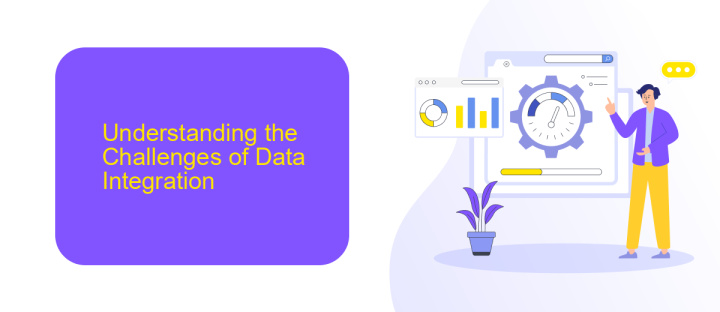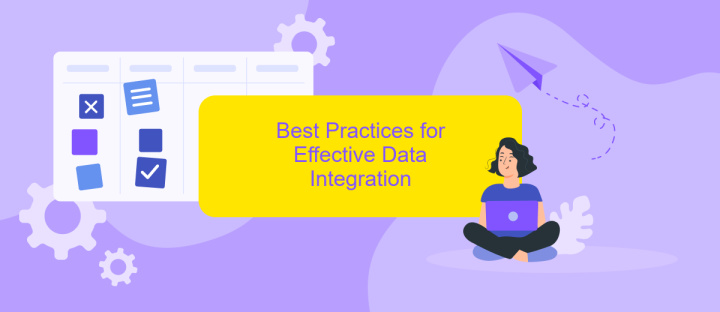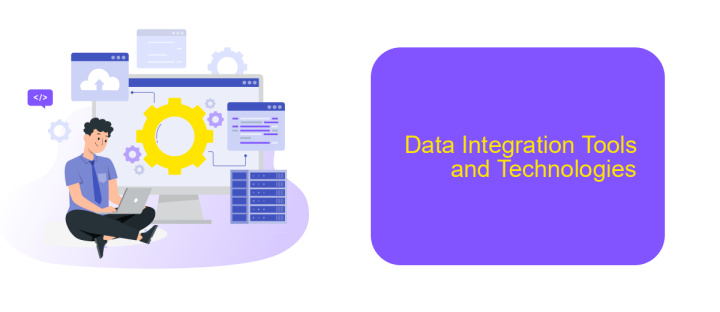Simplify Data Integration
In today's data-driven world, seamless data integration is crucial for businesses to stay competitive and efficient. Simplifying data integration processes can significantly reduce complexity, save time, and enhance decision-making capabilities. This article explores practical strategies and tools to streamline data integration, enabling organizations to harness the full potential of their data with minimal hassle and maximum efficiency.
Simplify Data Integration: A Comprehensive Guide
Integrating data from various sources can be a complex and time-consuming process. However, by leveraging modern tools and best practices, this task can be significantly simplified. The key is to use platforms that offer seamless data integration capabilities.
- Automate data workflows to reduce manual effort.
- Utilize platforms like ApiX-Drive for easy API integrations.
- Ensure data consistency and accuracy across all systems.
- Monitor and manage data flows in real-time.
- Implement robust security measures to protect data integrity.
One effective solution is ApiX-Drive, which enables businesses to integrate multiple applications without coding. By automating data transfers and providing a unified interface, ApiX-Drive helps streamline operations and enhance productivity. With the right tools and strategies, data integration can be made much more manageable and efficient.
Understanding the Challenges of Data Integration

Data integration is a complex process that involves combining data from different sources into a unified view. One of the primary challenges is dealing with data inconsistency, where data from various sources may have different formats, units, or levels of granularity. This requires significant effort in data cleaning and transformation to ensure that the integrated data is accurate and reliable. Additionally, managing large volumes of data and ensuring that the integration process does not compromise performance can be daunting tasks.
Another significant challenge is maintaining data security and privacy during the integration process. As data moves between systems, it is crucial to ensure that sensitive information is protected against unauthorized access. This often involves implementing robust encryption and access control mechanisms. Tools like ApiX-Drive can simplify these challenges by providing a platform that automates the data integration process, ensuring data consistency and security. ApiX-Drive supports a wide range of data sources and offers customizable workflows to streamline the integration process, making it easier for organizations to manage their data effectively.
Best Practices for Effective Data Integration

Effective data integration is essential for leveraging the full potential of your data assets. By following best practices, organizations can ensure seamless and efficient data flow across various systems.
- Define Clear Objectives: Establish clear goals and objectives for your data integration project. Knowing what you aim to achieve will guide the entire process.
- Choose the Right Tools: Select robust integration tools that align with your requirements. For instance, ApiX-Drive offers a user-friendly platform for automating data transfers between different systems.
- Data Quality Management: Ensure the integrity and quality of data through regular validation and cleansing processes. High-quality data is crucial for accurate analysis and decision-making.
- Scalability: Plan for future growth by choosing scalable solutions that can handle increasing data volumes without compromising performance.
- Security: Implement strong security measures to protect sensitive data during integration. This includes encryption, access controls, and compliance with relevant regulations.
By adhering to these best practices, organizations can streamline their data integration processes, making data more accessible and valuable for strategic decision-making. Leveraging tools like ApiX-Drive can further enhance efficiency and reliability in data integration endeavors.
Data Integration Tools and Technologies

Data integration tools and technologies have become essential for businesses seeking to streamline their operations and make data-driven decisions. These tools simplify the process of consolidating data from various sources, ensuring that information is accurate and readily accessible for analysis and reporting.
One of the key benefits of using data integration tools is their ability to automate the data collection process. This not only saves time but also reduces the risk of errors associated with manual data entry. Modern data integration platforms offer a range of features that cater to different business needs and technical requirements.
- ETL (Extract, Transform, Load) Tools
- Data Warehousing Solutions
- API Integration Platforms like ApiX-Drive
- Cloud-based Integration Services
- Data Virtualization Tools
ApiX-Drive, for instance, is an API integration platform that enables seamless data transfer between various applications and services. It allows businesses to automate workflows without the need for extensive coding, making it an ideal solution for those looking to simplify their data integration processes. By leveraging such tools, organizations can ensure that their data is always up-to-date and available for critical business insights.
- Automate the work of an online store or landing
- Empower through integration
- Don't spend money on programmers and integrators
- Save time by automating routine tasks
Case Studies and Success Stories
One of our most notable success stories comes from a mid-sized e-commerce company that struggled with integrating their various data sources. By leveraging ApiX-Drive, they managed to streamline their data integration processes significantly. The platform enabled them to connect disparate systems like their CRM, email marketing tools, and online store seamlessly, resulting in a 30% increase in operational efficiency. The automation of data flows not only reduced manual errors but also provided real-time insights, empowering the team to make data-driven decisions swiftly.
Another compelling case study involves a healthcare provider that needed to integrate patient data from multiple sources for better care coordination. Using ApiX-Drive, they achieved a unified view of patient information by connecting their electronic health records (EHR) system, appointment scheduling software, and billing systems. This integration reduced administrative workload by 40% and improved patient satisfaction scores. The seamless data flow ensured that healthcare professionals had access to accurate and comprehensive patient data, leading to better treatment outcomes.
FAQ
What is data integration?
Why is data integration important?
What are the common challenges in data integration?
How can I automate data integration processes?
What should I look for in a data integration tool?
Time is the most valuable resource for business today. Almost half of it is wasted on routine tasks. Your employees are constantly forced to perform monotonous tasks that are difficult to classify as important and specialized. You can leave everything as it is by hiring additional employees, or you can automate most of the business processes using the ApiX-Drive online connector to get rid of unnecessary time and money expenses once and for all. The choice is yours!


